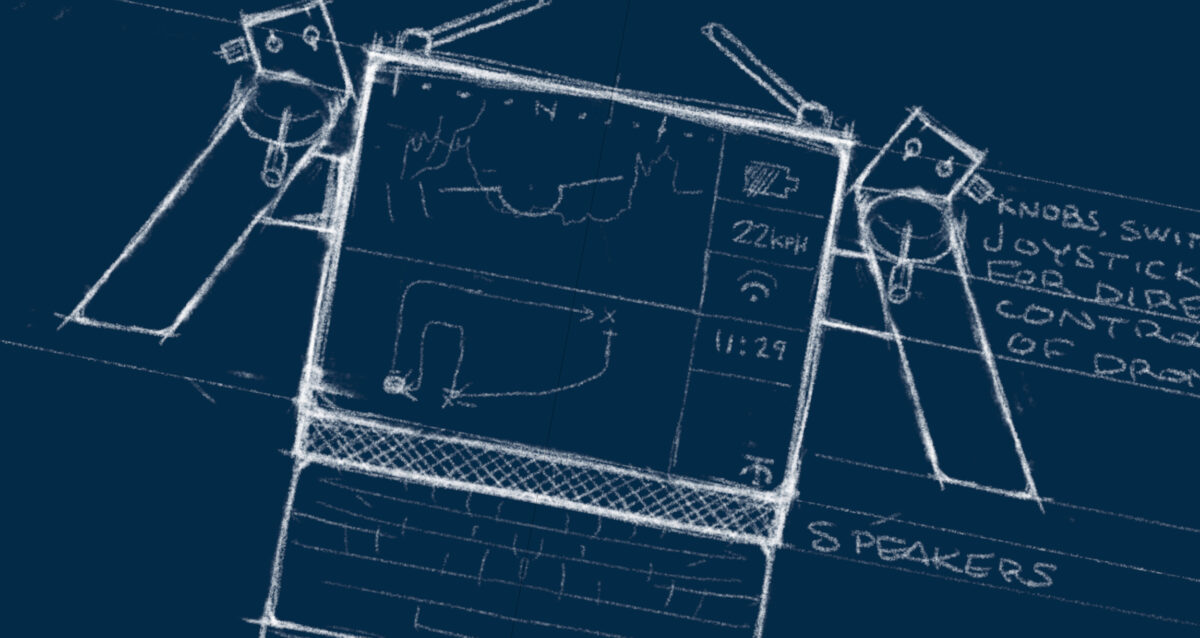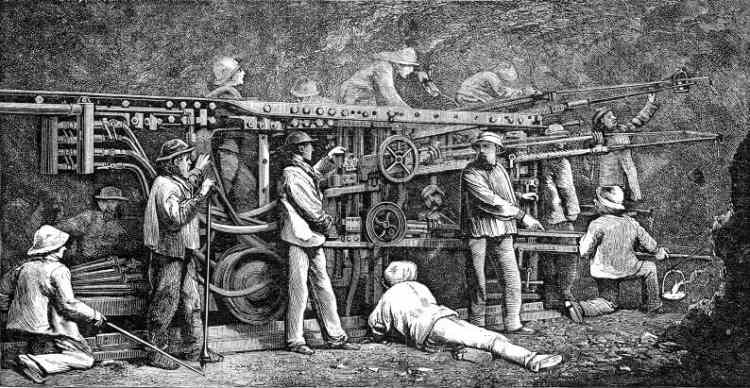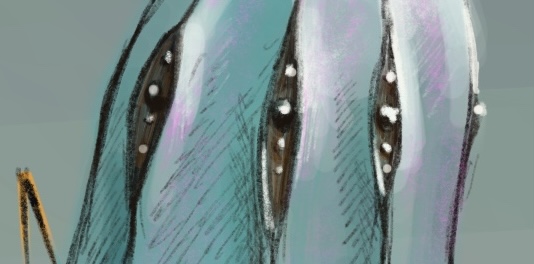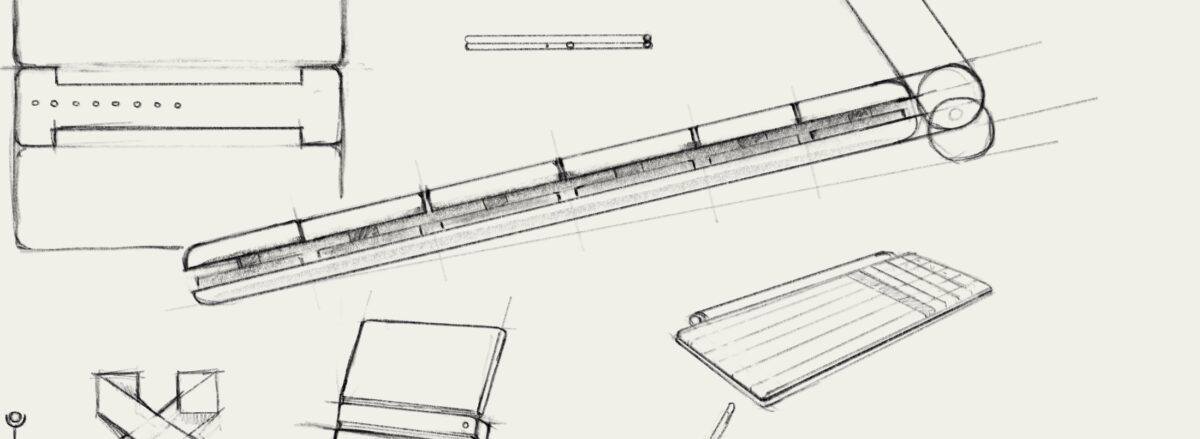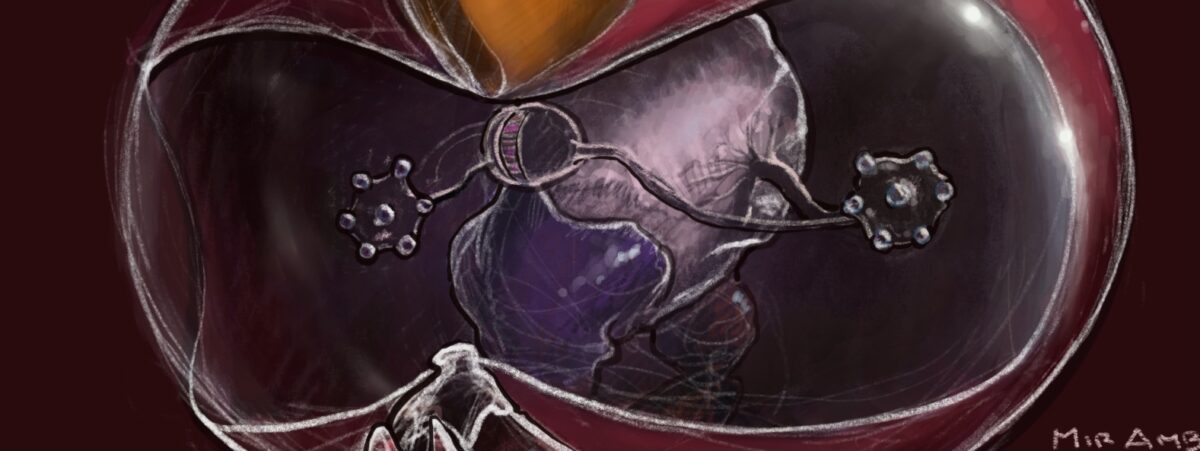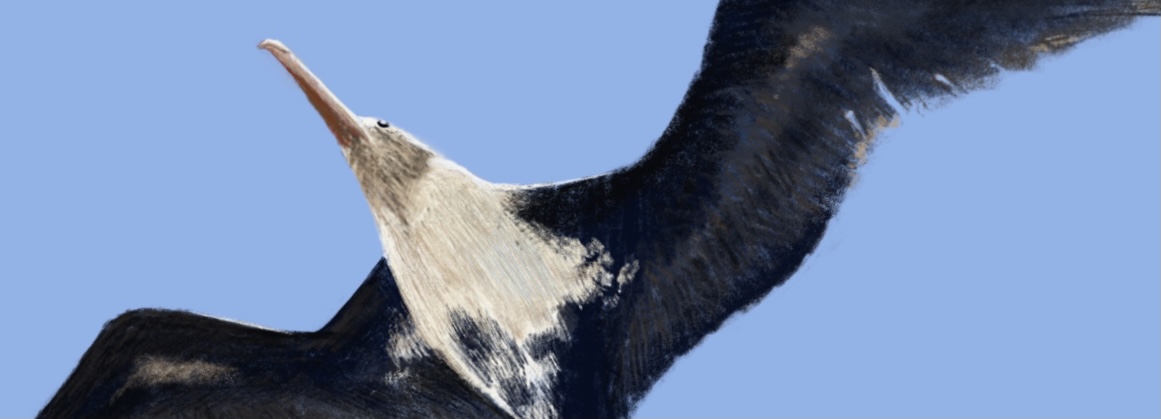The Dronedeck is a bit of design fiction, but one that is entirely technically feasible right now. This is a matter of hours spend designing, fabricating, and testing, not technical possibility.
Continue reading “Dronedeck”Category: R∈R⟺R∉R
Where Eyes Wide to the Stars is Getting Warmer
An update about a game I thought would be super simple
Continue reading “Where Eyes Wide to the Stars is Getting Warmer”Liberation Technology 2: Entry Points
You should probably read Liberation Technology 1: Who and Why
One of the features of Liberation Technology as I currently envision it is that it has different entry points — different creative scenes that have their own uses for the technologies around microcontrollers and develop their own custom installations for their own purposes. By giving beginning creators relevant starting material (who might bring a lot of existing skill from the associated crafts of that scene), the environment can encourage the creators to fully explore and expand the medium. Eventually, those creators can go on to develop new entry points for other creative scenes that they’re a part of as their interests expand and their existing skills retain applicability.
Continue reading “Liberation Technology 2: Entry Points”Gozoy Mboc
There’s an offhand mention of Gozoy back in the vignette in the last post. In the universe of Eyes Wide to the Stars, it might be thousands of years in the future, but humanoids are still just stretching out to the fringes of our part of the galaxy. It’s rare that someone encounters an alien in the same way that it’s rare to encounter someone from another country now. But it definitely happens, and this vignette (and most of the game for which this vignette is a design exercise) takes place at the edges of humanoid space, where you’re more likely to run into someone go Gozoy Mboc.
Continue reading “Gozoy Mboc”Chaka Sungu
Gribus held her head low, her back to the underside of the bar. Across it just a meter away, patrons spoke loudly in a thousand tongues while a few spoke with completely different organs. The air was as thick with thumping music as it was with the intoxicating smoke of Poobash. Just on the other side of the wood-veneered duraluminum, a swaggering Kantarian pilot bragged and flirted with a Zoda, who chirped the occasional chord of distant encouragement from their syrinces while draining their drink through their proboscis. Try as she might to listen for her pursuers, she could only hear the Kantar telling questionable tales to his partner who, to Gribus’ surprise and relief, invited him to their berth in their freighter with their podmates.
“Chaka sungu,” she muttered to herself, finally able to listen intently past the sounds. But now, her eye caught on the last thing she’d hoped to see: eyes looking back. The bartender, emerging from a hatch in the floor with a crate of supplies, looked at Gribus with a moment of possessive anger that quickly melted to concern when he saw the look on her face — the hair plastered to her forehead with sweat, the torn prisoner’s jumpsuit, the brown skin drained grey with fear and exhaustion. With a subtle nod, he finished climbing the stairs with his crate, stood to smile at a customer, wiped his hands on his apron, and took their order.
She watched as he walked away to the other end of the bar where he picked up a bottle of pressurized Orun gas and an apron, then walked toward Gribus to pick up a bottle of Lizard Tears as a mixer, dropping the apron across her knees as he did so.
When she didn’t pick it up, he nudged it gently with his foot, and, understanding, she wriggled into it. She rummaged in its pockets, finding a piece of string to tie back her hair along with a sonic corkscrew and a data pad holding a drink order. She scuttled under the bartender’s legs toward the hatch, checked her hair one last time, put on a false smile, and stood as though emerging from the storage hatch. The club looked like it had when she’d first ducked behind the bar, only moreso. In the last few minutes, the crowd had thickened. Nearby, she noticed the smuggler Rur Shatan and a colleague dancing with a Confederate Navy officer on shore leave, the two likely sizing up the officer for a mark. A being who looked like nothing so much as a giant, glistening pickle stood, pulsing like a swallowing throat to the beat of the music. And, near the door, she saw through a brief break in the crowd the three Confederate secret police who were to be her executioners just a half hour before dumb luck had given her reason to make a break for it.
But what she felt when she saw their faces was not the fear she expected. Instead, the police’s head seemed to fold out of itself; the face and eyes and ears rolling away into a spot between the skull, and what emerged were the thoughts of the police: a fear of reprimand; anger at Gribus for putting them in such a position; the need to find Gribus before the Confederate Chaser, Enshul Mas, arrived to claim jurisdiction for an escaped Xenopsychometer named Saenz Gribus.
They thought she was a Xenopsych? Who could guided ships through hyperspace? But she was no psychometer. She was a thief, smuggled in aboard a tramp freighter as part of Bolan’s now-failed scheme to grab a shipment of star diamonds. That’s why she’d been caught. She’d been abandoned here two days ago with no way to get back off the station. She…
It slowly dawned on he what she’d just seen. She’d seen into the secret police’s mind.
And that dawning showed her that it had been no dumb luck that had freed her. When she’d been collared and booked by the station patrol, they’d taken her name (fake, of course, with the forged documents to aid) and handed her to a Confederate Marshall — an imposing individual in his sleek, dark uniform bearing only the symbol of the Southern Arm Confederacy. Attendants had put her into a complex, mechanical chair, sensors attached to her head while a bored technician asked her droning, meaningless questions. And then… she had risen from the interrogator machine while her interrogators calmly loosed her bindings, then looked on impassively. She had walked out. The attendants’ eyes had been seeing but incurious, as she walked the direction she knew to walk. Once outside the constabulary, her calm she had been feeling became the sudden impulse to run.
She’d rounded the corner to see a surprised station cop drawing his blaster on her — his uniform was not Confederate, just a local rookie she’d seen once or twice, but she didn’t want to be shot by anyone. Just as her shock had resolved into a desperate need to get the blaster away from him, the cop’s eyes took on the same glazed, incurious look and he handed her his square service blaster. She had taken it with a confidence that only now struck her as peculiar. The guard calmly walked past her into the corridor, and pointed the opposite direction from her. “She went that way, “ he said in a deadened voice to the pursuing Confederate Secret Police. She ran, holding the blaster like the baton of a relay runner.
Around a second corner had come running another pursuer, this one with no uniform at all, but carrying a Confederate blaster, same as the Marshall who had captured Gribus. She had a grizzled and resolute face, a long-ago broken nose, and wore a filthy teal space suit with no helmet or life support.
The two dove under cover and fired, bolts punching thumb-sized holes into the smooth, institutional white walls and harmlessly through the casing of a cube-shaped office robot who immediately tested the listed specifications of its top speed. Gribus had run, ducking behind the robot as it said, “Please do not run in the corridor. Please do not run in the corridor.”
No further shots had come, though Gribus could hear voices shouting from behind.
The corridor ended at a sliding transparent door, and the robot paused, unable or unwilling to exit the police station. On the other side bustled the populace of the station. Merchants and tramp freighter captains making deals to transport goods legal and contraband. Xenopsychs, recognizable by the brand on their foreheads, taking time off from their conscripted labors to spend their meager savings gambling. Asteroid prospectors, carrying their certified commodity tablets to trade in the market. Most were human, but there, standing two meters tall and encased in a space suit, undulated a giant slug using four slender robotic arms to exchange an attaché for a lock box the size of her forearm.
Gribus had seen the weapon sensors array around the door. She’d shoved the blaster into a receptacle on the robot and said, “Off you go!” allowing it past her to continue its duties. Walking through the door and the river of sophonts, she’d ducked into bustling bar across the corridor.
And now, wearing an apron, she found herself taking an order from a bearded, prospector, still wearing much of their space suit, their visor thrown back to reveal their unpleasant features.
The Confederate secret police received a message on their communicators. They briefly conferred with each other, then departed.
The bartender, standing close to pull a Melodic Wheat beer from the tap, asked her quietly, “What was that about?”

Industrial Design for a Parallel Future
There was a point where computer technology (and its associated technologies like sound synthesis) were the Jade Destiny sword — powerful in its own right, but also the object of desire for competing interests. As an object — a tool — it is, itself, amoral; its uses can bend toward justice or toward externalized entropy.
Continue reading “Industrial Design for a Parallel Future”Mir Amblek, a Nice Cyborg Space Jellyfish to Meet
I was hanging out in the Talo Deshi spaceport a little while ago (it’s pretty amazing there. There’s a whole music scene that’s sprung up) and I met Mir Amblek. They’d been waiting for a contact who hadn’t shown up, so we got to talking. After the show last night, in which Pur33g Nexh Gurüu had opened for Suzanne Ciani, I was feeling really relaxed and energized, and I asked Amblek if I could draw them. They agreed, and I got them a pot of duwweh to drink while we sat together.
Continue reading “Mir Amblek, a Nice Cyborg Space Jellyfish to Meet”Shock:2.0.1: Gaffer Tape
It’s time to start playtesting the basic ideas behind Shock:2. I have several specifications that I want to meet, most having to do with conflict resolution. Because Shock:Social Science Fiction is a 13 year old game and, while it’s had a surprising number of descendants, no one has taken from it what it does best. I want to give designers the opportunity to steal those ideas instead of just the obvious ones.
Continue reading “Shock:2.0.1: Gaffer Tape”Paul Atreides’ Personal Ornithopter
Frank Herbert uses description very rarely in his writing. He announces things with nouns and shows consequences of actions without describing the objects or behaviors. It leaves a lot of room for interpretation, which is, I think, one of the reasons his books have been so resoundingly popular.
Among the objects he never describes are the ornithopters that fill the Known Universe in 10,191. They’re not just practical vehicles; they seem to be a status symbol, and the Atreides are proud of their mastery of the form, both in their hand-manufacture (automated devices being under millennia of ban) and in their handling.
This is my interpretation of Paul’s ornithopter, used to flee Arakeen with Jessica, as the Harkonnens retake their stronghold there.
Continue reading “Paul Atreides’ Personal Ornithopter”Frigate Bird, Study 2
The Caladan Frigate Bird warrants at least one more study before I figure out how the Atreides would build an ornithopter.
Continue reading “Frigate Bird, Study 2”